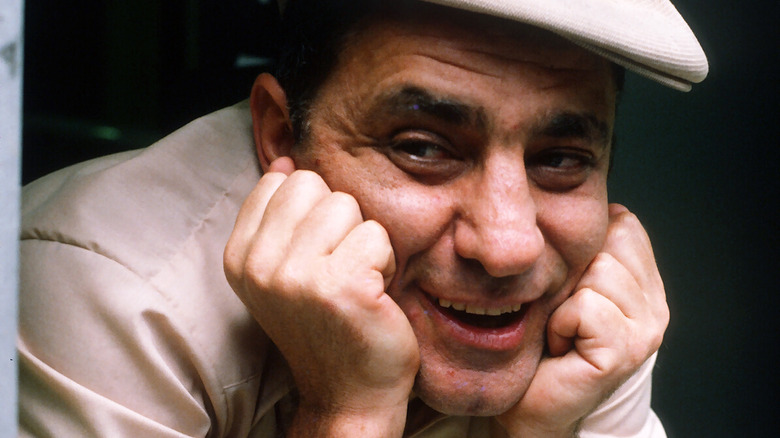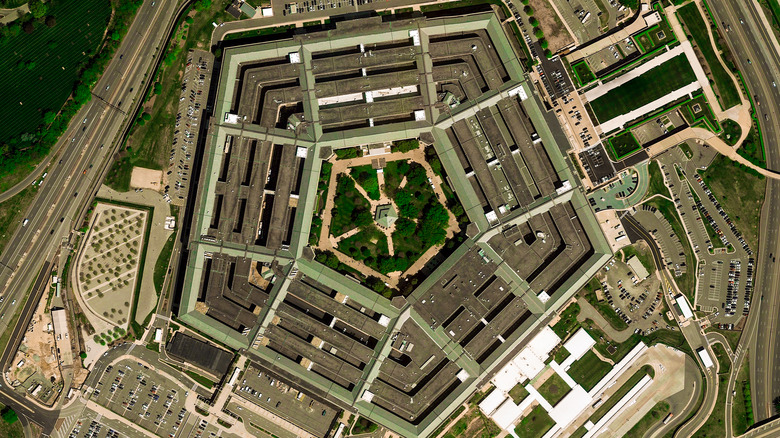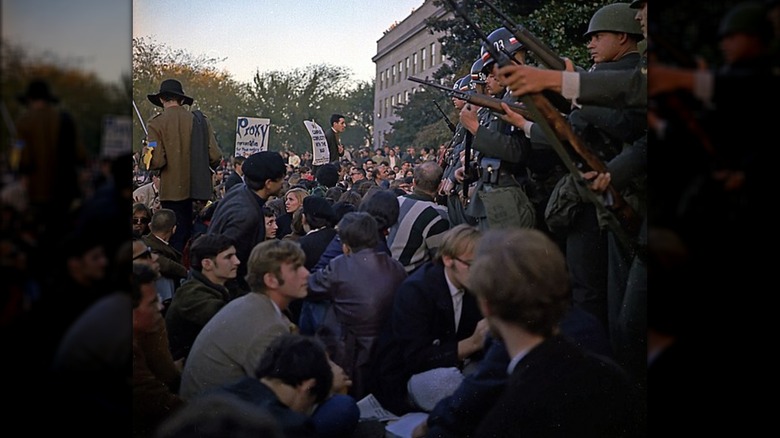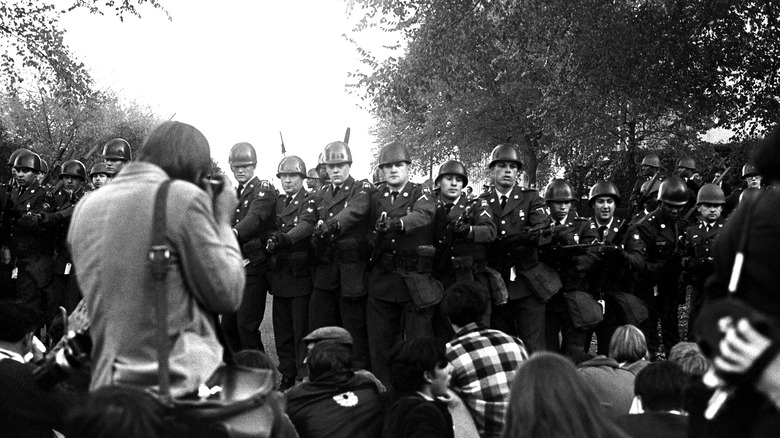The Time Abbie Hoffman And Allen Ginsberg Attempted To Levitate The Pentagon
When thinking of the counterculture movement of the 1960s, images of flower chains, peace signs, and bell bottom pants may come to mind. But it was so much more than that. It was a time of passion and protest, mainly against the Vietnam War and for social rights. It was also a time of supernatural events, including rituals, exorcisms, and well ... magic.
At least some people thought it was. According to Smithsonian Magazine, others thought such fantastical shenanigans were just a ploy for media attention, but more on that later. The story starts with a few rebel activists who shaped the counterculture movement, including Abbie Hoffman, poet Allen Ginsberg, businessman and anti-war leader Jerry Rubin, artist Michael Bowen, and plenty of other trailblazers along the way. The group sought to bring attention to their anti-war efforts, and they did it by attempting to levitate one of the most important government buildings in our nation (hint, it has five sides).
How It Started
The March on the Pentagon, one of the most influential protests in American history, occurred on October 21, 1967 (via Smithsonian Magazine). A memory blanketed in iconic pictures of hippies putting daisies in rifles only came to be after months of careful planning from some of the country's most devout anti-war minds. It all started with Abbie Hoffman, the founder of the Yippies movement. Hoffman, trying to advance his apolitical movement, joined the National Mobilization Committee to End the War in Vietnam (aka "The Mobe").
This move helped him progress closer to his end-of-war goal, as the committee was planning a two-day protest of 100,000 on the Capitol. However, that all changed when Hoffman and The Mobe recruited one of the greatest anti-war minds of the time to help them tackle this immense feat -– Jerry Rubin. Rubin became project director of the planned protest and suggested that advancing on the Capitol may actually send the wrong message. By protesting at the Capitol, they were just furthering political negativity. If they truly wanted to be anti-war, they would go after the war effort where it hurt –- the Pentagon.
Where It Got Weird
Michael Bowen, who played a major role in 1960s activism, was known to regularly discuss supernatural relations to five-sides things, like pentagrams, per Smithsonian Magazine. After Rubin's location change suggestion, and Bowen's constant declarations against evil forces, another activist, poet Gary Snyder, suggested an advancement on the Pentagon would not only be a protest but an exorcism. To up the ante, Bowen said such an exorcism would involve making the Pentagon levitate.
Time reported that the group actually obtained a permit from the General Services Administration, to make the Pentagon soar 300 feet above the ground while chanting in Aramaic. According to the group, the building would turn orange, vibrate, emit all evil forces and end the war altogether. While we think whoever administered such a permit likely had a good sense of humor, many in the group did as well –- as only some of them truly believed in the act. Others felt it was a great ploy to attract the media's attention to their issues.
Many things happened that day -– provocative displays of public affection in the name of group love, Mayan rituals involving protective corn meal circles, massive amounts of drugs, and the main levitative feat (although, it didn't really happen). Oh, and Michael Bowen distributed over 200 pounds of flowers that were iconically seen being placed in the barrels of soldiers' guns (per Smithsonian Magazine). And while these famous pictures appear innocent, the day sadly did not end that way.
Where It Got Ugly
President Lyndon B. Johnson was terrified of the impending movement, upon hearing rumblings of it, and ordered an extensive military presence (via American Heritage). With a turn out of 3,000 troops and nearly 2,000 National Guardsmen, the day that started off peacefully (and weirdly), ended shrouded in blood. After the various displays of public affection, drug usage, and spirituality, things took a turn for the worst when protesters began hurling insults, rocks, soda bottles, tomatoes, and clubs at the military (via Time).
Throughout the protest, people began trying to break into the Pentagon, including a mass of 3,000 at one point. Several got through but were met by angered guards who bloodied and arrested them. When the 48-hour permit to levitate the Pentagon was up, police advanced on the crowd en masse. By the end of the protest, nearly 700 people were arrested, and about 50 were injured (including two dozen military members).
However, despite the convoluted chaos, and seemingly negative ending, Hoffman and his crew got their point across. American Heritage reported that public views on the Vietnam War began to change after that moment in history, and even some members of the military began to understand the anti-war movement. A former opposer of the anti-war movement, Congressman Morris Udall even changed his stance, and Pentagon employee Daniel Ellsberg, who watched the march that day, would later leak the Pentagon Papers changing the country's perception of its government forever.



